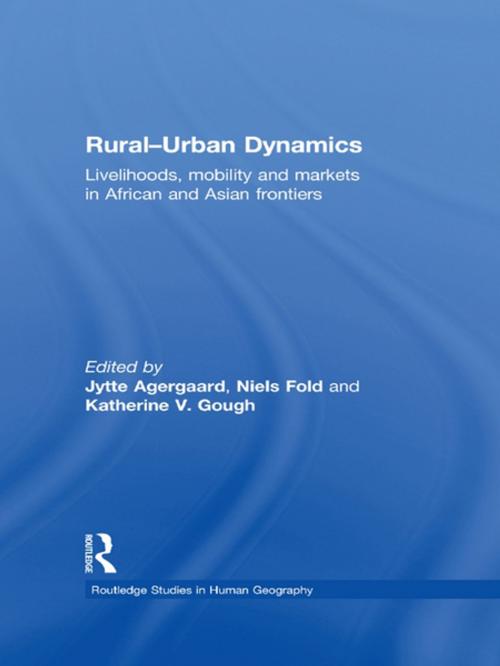Rural-Urban Dynamics
Livelihoods, mobility and markets in African and Asian frontiers
Nonfiction, Science & Nature, Science, Earth Sciences, Geography, Social & Cultural Studies, Social Science, Human Geography| Author: | ISBN: | 9781135256982 | |
| Publisher: | Taylor and Francis | Publication: | September 11, 2009 |
| Imprint: | Routledge | Language: | English |
| Author: | |
| ISBN: | 9781135256982 |
| Publisher: | Taylor and Francis |
| Publication: | September 11, 2009 |
| Imprint: | Routledge |
| Language: | English |
It has increasingly been recognised that rural and urban areas are inextricably interlinked. This book adopts a fresh approach to the issue of rural-urban dynamics through a study of the changing nature of livelihoods, mobility and markets in ten study sites across four countries of Africa and Asia. Building on detailed fieldwork conducted in Ghana, Tanzania, Vietnam and Thailand, the authors explore how settlements and livelihoods are being transformed as long-term inhabitants and recent migrants embrace new economic activities many of which are linked to global markets.
The book is structured around the concept of ‘frontier’ which is conceptualized as being a dynamic space where the forces of economic, demographic and social change are brought to bear. The study sites include agricultural frontiers (coffee, cocoa, pineapples and fresh fruit), handicraft and manufacturing frontiers, and mining frontiers (gold and diamonds). In all of the cases, global value chain dynamics have played a pivotal role in shaping local livelihoods. Some settlements are developing into new urban centres whilst others are suffering from a boom and bust experience due to the unreliability of export markets. The similarities and differences between the frontier settlements are drawn out by comparing frontiers of similar types and by highlighting the theoretical and policy implications of the findings from all the frontier types.
The originality of the book lies in its combination of conceptual clarity, methodological coherence and empirical richness. By combining detailed empirical findings with theoretical insight from debates on livelihoods, global value chains, mobility patterns, settlement dynamics and rural-urban relations, the book sheds new light on these issues within an overall framework of development trajectories in Africa and Asia. Given scholars’ and international agencies’ current interest in the spatial dimensions of economic development, this contribution is particularly timely with its fresh geographical approach to development issues; this book is a pertinent and authoritative read for anyone researching or learning in the field of development.
It has increasingly been recognised that rural and urban areas are inextricably interlinked. This book adopts a fresh approach to the issue of rural-urban dynamics through a study of the changing nature of livelihoods, mobility and markets in ten study sites across four countries of Africa and Asia. Building on detailed fieldwork conducted in Ghana, Tanzania, Vietnam and Thailand, the authors explore how settlements and livelihoods are being transformed as long-term inhabitants and recent migrants embrace new economic activities many of which are linked to global markets.
The book is structured around the concept of ‘frontier’ which is conceptualized as being a dynamic space where the forces of economic, demographic and social change are brought to bear. The study sites include agricultural frontiers (coffee, cocoa, pineapples and fresh fruit), handicraft and manufacturing frontiers, and mining frontiers (gold and diamonds). In all of the cases, global value chain dynamics have played a pivotal role in shaping local livelihoods. Some settlements are developing into new urban centres whilst others are suffering from a boom and bust experience due to the unreliability of export markets. The similarities and differences between the frontier settlements are drawn out by comparing frontiers of similar types and by highlighting the theoretical and policy implications of the findings from all the frontier types.
The originality of the book lies in its combination of conceptual clarity, methodological coherence and empirical richness. By combining detailed empirical findings with theoretical insight from debates on livelihoods, global value chains, mobility patterns, settlement dynamics and rural-urban relations, the book sheds new light on these issues within an overall framework of development trajectories in Africa and Asia. Given scholars’ and international agencies’ current interest in the spatial dimensions of economic development, this contribution is particularly timely with its fresh geographical approach to development issues; this book is a pertinent and authoritative read for anyone researching or learning in the field of development.















